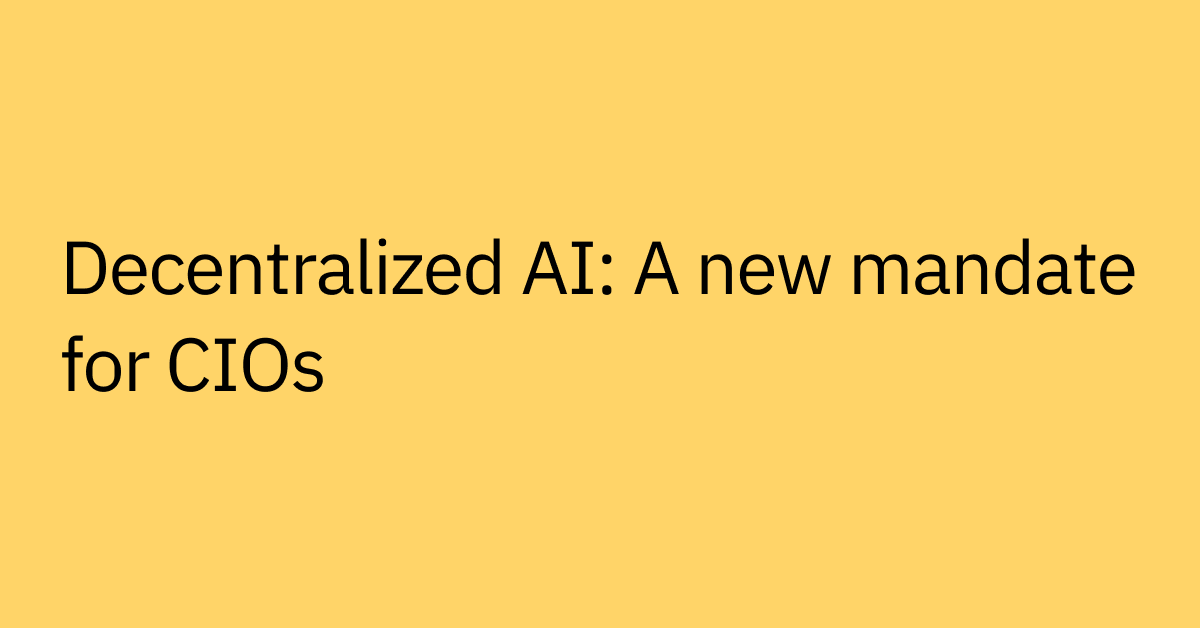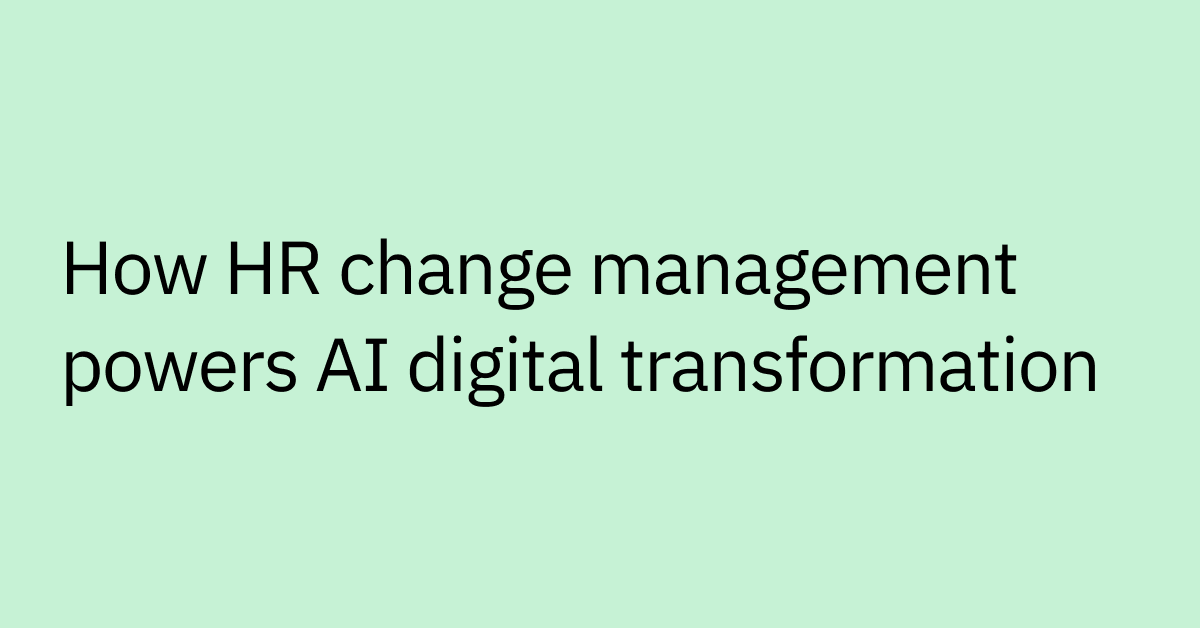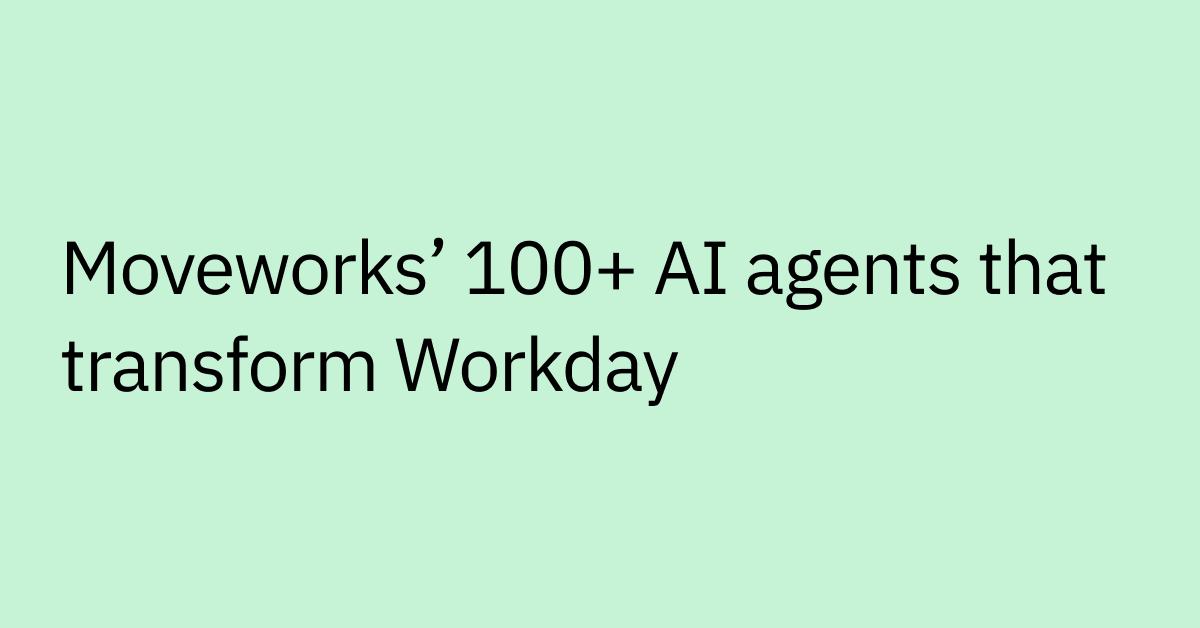Table of contents
Highlights
- A digital transformation strategy aligns technology, people, and processes around measurable business outcomes to drive sustainable growth.
- Success depends on establishing clear goals, assessing current systems, and aligning leadership, governance, and employee adoption.
- AI now plays a central role by automating work, surfacing insights, and personalizing support across enterprise systems.
- Effective strategies balance innovation with strong governance, scalability, and cross-functional collaboration to ensure lasting impact.
- Moveworks enables execution by automating workflows, unifying knowledge, and delivering AI-powered support across every department.
Digital transformation has a lot of enticing benefits: smoother workflows, better tools, and more productive, empowered employees.
But if you don’t have a solid strategy, your initiatives can quickly lead to disconnected tools, stalled projects, and frustrated teams.
The real key to digital growth is alignment. Your goals should be aligned with your tech, which should be aligned with your people — all working together to drive measurable value and visible impact across the organization.
Only about 1 in 3 of transformation efforts are successful — often because organizations focus too much on adding technology: more apps, more logins, and more systems — without first aligning those tools to a clear strategy.
To succeed, you need a strategy that delivers real results, not just more shiny tools.
What is a digital transformation strategy?
A digital transformation strategy is a comprehensive plan that guides how enterprises modernize operations, tools, and employee experiences. That includes everything from productivity platforms to AI-powered self-service systems.
It helps define how and why you implement new technologies to solve real business problems and drive measurable outcomes.
A strong strategy defines the why and how — not just the what — behind your transformation efforts.
A digital transformation initiative might focus on a single project, like introducing an AI-powered knowledge base or automating onboarding. But the strategy is the overarching framework that ensures every decision stays aligned with your long-term business objectives.
For instance, if your organization has a goal to improve productivity across a hybrid workforce, your digital transformation business strategy would define how to evaluate, select, and implement technologies — like AI assistants or collaboration tools — based on the outcomes you want to achieve.
Why a digital transformation strategy is critical for long-term success
Digital transformation offers incredible potential — from improving workflows to enhancing employee experiences. But realizing that potential requires a thoughtful, enterprise-wide strategy.
Without clear goals and planning, transformation efforts can become fragmented, leading to slow progress, unclear ownership, or missed expectations. A well-defined strategy helps you stay aligned across teams and initiatives — ensuring your efforts scale efficiently and deliver real business impact.
Organizations that run into delays or see limited returns often do so because of challenges like:
- Unclear success metrics
- Poor change management
- Systems that don’t scale or integrate effectively
A strong digital transformation strategy gives your teams shared direction, supports flexibility as business needs evolve, and helps ensure each investment delivers long-term value.
Staying competitive
A strong digital transformation strategy positions your organization to stay ahead of change — helping you become more agile, adaptable, and innovation-ready.
With the right plan in place, you’ll be able to proactively introduce emerging tech in a way that’s both scalable and aligned to your business goals. It enables you to:
- Respond quickly to market shifts
- Make informed, data-driven decisions
- Identify and implement the right technologies
- Support evolving employee expectations
- Innovate with greater speed and confidence
As AI continues to evolve, a modern transformation strategy also helps you pinpoint where it can make the biggest impact. Whether it's automating routine tasks, enhancing employee self-service, or accelerating decision-making, aligning AI to your business goals is key to gaining a competitive edge — and delivering measurable results across every team.
Operational efficiency
Manual processes often limit productivity, slow progress, and create friction for employees trying to get work done.
A modern digital transformation strategy helps reduce those inefficiencies — replacing repetitive, manual tasks with automation that’s scalable, consistent, and easy to access across the business.
With the right tools and systems in place, you can:
- Cut down time spent on routine tasks
- Minimize human error and streamline approvals
- Broaden access to support and resources
- Optimize team productivity and resource allocation
AI plays a critical role here — enabling always-on support, unifying fragmented workflows, and proactively resolving issues before they disrupt work.
By reducing reliance on manual processes, your teams gain back time for higher-impact work, while your business operates more efficiently at scale.
Core components of a digital transformation strategy
A successful digital transformation strategy is much more than just a list of items to check off. It’s a framework that aligns your business goals, processes, and technology to drive long-term value — with AI and automation playing a central role.
There are three core pillars that support an effective strategy:
1. Business goals and success metrics
Every good strategy needs a starting point, and that starting line is your business goals. What do you want to achieve?
Anchor your digital transformation strategy in the answer to that question. Every tool or tactic you implement should tie back to a clear business outcome.
Start by defining objectives and key results (OKRs) or similar goal-setting frameworks that your organization already uses.
For example, if your goal is to improve employee onboarding efficiency, your key result might be to reduce time-to-productivity by 30%.
Setting measurable, outcome-driven goals helps:
- Focus your strategy on what matters most
- Create alignment across teams and stakeholders
- Define success in ways that are trackable and meaningful
The more specific your goals and metrics, the easier it will be to prioritize the right digital initiatives and measure their impact over time.
2. Technology, data, and process assessment
You need to understand your current situation before you can transform it. So the second element of a strong digital strategy is a comprehensive assessment of your current tech ecosystem, data, and processes.
- Which systems are already in place?
- Where are the bottlenecks, inefficiencies, or redundancies?
- How clean, connected, and accessible is our data?
This evaluation can help you figure out which digital technologies will likely work best to help you achieve your goals, plus any gaps you may need to address — such as opportunities to unify workflows using AI assistants or automate repetitive processes across tools like Workday, ServiceNow, or Microsoft Teams.
As part of this assessment, ensure your tools and processes meet your enterprise’s security, compliance, and governance standards.
3. People and change management
Your organization would be nothing without its people. And before, during, and after any change — including digital transformation — you need to make sure they’re on board.
- Are your executives committed to the strategy?
- Are your employees open to changing how they work?
- Are you ready to invest in training and feedback loops?
If you want your strategy to succeed, you need people to actually use the new tools you’re planning to bring in. And if you want adoption to happen, you have to be prepared to involve employees across departments and levels, from the very beginning.
This is especially important for AI adoption, where change may feel unfamiliar — involving conversational tools, automation, and new workflows across departments.
Gaining leadership alignment early on also helps lay the groundwork for broader governance as your strategy scales.
How AI is shaping modern digital transformation strategies
Once upon a time, digital transformation might have looked like migrating to the cloud or digitizing individual processes. Artificial intelligence was a supporting layer — helpful, but not essential.
Today, AI — especially in the form of intelligent AI assistants — has taken center stage to drive business value. Modern strategies primarily focus on using AI to automate work, extract insights, and deliver personalized, real-time support across the enterprise.
AI assistants powered by large language models (LLMs) can now interpret requests, take action across business systems, and securely surface information — helping organizations move faster and operate at scale.
AI can also help create more adaptive, intelligent systems by connecting data across departments and enabling real-time collaboration.
Together, artificial intelligence and digital transformation can revolutionize how your business runs. But you’ll need the right level of planning and oversight to successfully bring your strategy to life.
Before diving in, ask questions like:
- Is our data high-quality, accessible, and diverse?
- Is our infrastructure scalable and extensible?
- Do we have the governance, security, and integration frameworks to support enterprise-wide AI adoption?
- Are we ready to support AI agents that reason, plan, and take action across our systems?
Ultimately, if you can get all of these elements right, you’ll have the ability to move faster, make smarter decisions, and confidently respond to change.
How to develop a strategy: Step-by-step guide
To see real change from your digital transformation strategy, you’ll need to align your efforts with your biggest challenges and opportunities — from business goals to governance.
1. Define business objectives and transformation goals
Start by identifying the specific problems you’re solving and what outcomes you want to achieve. At this stage, you’ll want to get leadership involved to discuss your company’s top priorities and the impact of each one.
Ask questions like:
- What do employees need but aren’t getting?
- Where are we losing time, money, or momentum?
- Which workflows are slowing us down?
Then take those insights and turn them into goals.
For instance, if your IT service desk is drowning in support tickets, your goal might be: “Resolve 50% of Tier 1 IT issues autonomously using AI assistants within the next 12 months.”
2. Align on success metrics
Once you’ve set goals, decide which specific metric you’ll use to measure your progress. For example, if you’re introducing enterprise AI to help relieve IT teams by offering self-service support, helpful success metrics might include:
- Resolution rate
- Time-to-resolution
- Ticket deflection
- AI adoption or usage rate across departments
- Employee satisfaction
Make sure you can baseline these metrics before launch — and monitor these metrics continuously afterward. This enables you to optimize your approach as business needs evolve.
3. Conduct a digital maturity assessment
Remember, you’ll need to review your current business processes to get a good idea of your capabilities, evaluate your existing digital business tools, and identify what’s working — and what’s not — before bringing in anything new.
Otherwise, you could hit major delays mid-deployment. Consider whether you need to address:
- Redundant or outdated systems
- Inconsistent or inaccessible data
- Low-quality, disconnected, or siloed data that could impact AI performance
- Gaps in functionality or integration
- Limited identity or permissioning frameworks
- Areas where AI or automation could reduce manual effort or support load
This step is especially important for preparing your infrastructure to support AI agents across platforms like ServiceNow, Salesforce, or Workday. Now is the time to troubleshoot — before implementing new digital solutions.
4. Identify use cases and quick wins
Don’t be afraid to start small. The snowball effect can help you build momentum from quick wins, proving value as you pick up speed. You can find areas for fast, measurable impact through:
- High-volume pain points
- Manual, repetitive tasks that could be automated
- Support functions that struggle with volume or speed
These early wins encourage employee buy-in and executive support — when you document your processes.
As you identify other use cases down the road, documentation can help you scale effort across the organization with minimal disruption, turning transformation into a competitive advantage.
Use cases that move the needle
- AI-powered support assistants that resolve employee issues through natural language requests.
- Notifications and alerts that deliver proactive updates and highlight action items.
- Knowledge retrieval that spans all of your systems to reduce information silos and deliver answers fast.
- Automation of routine tasks to reduce human error and free up employees for meaningful work.
Read more digital transformation examples across industries and departments.
5. Build a digital transformation roadmap
Without a roadmap, your strategy could stall out before you even begin your digital transformation journey. A digital transformation roadmap helps you move from having a loose handful of disconnected goals and use cases to having a focused, action-oriented plan.
Without a roadmap, it’s easy to lose momentum or misallocate resources. You might run into:
- Employees resisting change because of unclear rollouts
- Missed goals lack of timelines
- Initiatives that don’t easily scale
But with a roadmap, you’re ready to put your strategy into action, hitting the road to reach those goals you identified in step one. Prioritize your initiatives by dividing them into short-, mid-, and long-term project phases, based on:
- Complexity: Start with lower-risk, straightforward items.
- Resource availability: Consider the budget, digital tools, people, and skills at your disposal right now.
- Impact: Choose items that will help you secure quick wins.
Foundational improvements — such as centralizing identity data or enabling integrations across key business systems — prepare you to scale AI, automation, and emerging technologies later.
For instance, maybe you want to deploy an AI assistant for IT support. The first item in your roadmap might be integrating your ticketing system and identity provider. After that, you can move on to automating tasks like access requests or password resets.
Make sure your modernization roadmap includes:
- Transformation milestones
- Estimated budgets
- Change management plans
As you go, you should also use performance analytics to refine your roadmap as you integrate new platforms and expand to other departments like finance, HR, or facilities.
6. Establish governance and ownership
To be complete, your digital transformation strategy needs two more things: governance and ownership. As you gain momentum and see growth, you may encounter challenges like:
- Risks around data privacy, compliance, and security
- Innovation slowing because you lack the structure to execute new ideas
- Delayed decisions without clear approval ownership
- Employee change fatigue from too many overlapping initiatives
To stay ahead, build accountability into your strategy early:
- Assigning clear goals and responsibilities
Executive stakeholders (CIO, CHRO, CFO) should be in charge of high-stakes approvals and resource allocations. Meanwhile, program owners (chief AI officer, Center of Excellence leads) are responsible for cross-functional decision-making. The third level of ownership is functional stakeholders: people from IT, HR, or finance who help make sure that the decisions are implemented correctly and effectively.
A governing body like a CoE provides structure and collaboration to help scale AI and automation. A CoE typically governs your AI assistant, enterprise search, knowledge management, and agentic automation — enabling safe, ethical and effective adoption.
- Defining a clear decision-making process
Teams should know who is responsible for making which type of decision, what criteria are used to evaluate decisions, and how those decisions are communicated. This helps teams avoid waiting around for approvals or getting frustrated by disagreements.
- Establishing guardrails and policies
Clearly document policies on data usage, security reviews, ethical use standards, privacy and consent, bias detection, automation thresholds, and human oversight. Strong governance helps ensure safe, compliant, and responsible AI adoption.
- Monitoring and reporting
Another big part of governance is running check-ins on a regular basis. These reviews should measure your progress against your goals and performance metrics. Make sure you’re following the policies you’ve outlined and being transparent with employees about where you’re succeeding and where you might be falling short.
How to measure success
It might seem obvious that you need to set goals and track performance metrics for your digital transformation strategy — but too often measurement is treated as a one-time project. In reality, it’s a continuous process.
Consistent measurement helps you maintain momentum, prove value, and refine your approach over time.
Keep the conversation going with stakeholders to answer questions like:
- Are the new technologies helping or creating friction?
- Is adoption high across key departments and regions?
- Have any new pain points, blockers, or opportunities emerged?
In addition to qualitative feedback, key performance indicators (KPIs) provide a structured view of success. Some helpful KPIs to track include:
- Productivity gains
- Cost savings
- Time to value
- Ticket deflection
- Tool or AI assistant adoption and usage rates
- Time to resolution
- Self-service resolution rate
- Employee satisfaction and support experience scores
If AI is a core part of your strategy, also consider tracking:
- AI agent success rate (did the agent complete the task?)
- Accuracy of information surfaced
- Number of manual tasks automated
- Engagement across different channels (chat, email, portal, etc.)
Transformation is never static — and your metrics shouldn’t be either. By continuously evaluating results, sharing insights, and adjusting based on feedback, you can make sure your strategy remains aligned with business goals as they evolve.
Execute your digital transformation strategy with Moveworks
Digital transformation isn’t just about adding new technology — it’s about creating a more agile, efficient, and employee-focused enterprise. To bring that strategy to life, you need a platform built for scale, speed, and measurable impact
Moveworks is a leading enterprise AI solution that helps organizations automate work, unify knowledge, and support employees through a single conversational interface.
Powered by agentic AI, Moveworks AI Assistant understands intent, plans multi-step actions, and executes tasks across your enterprise systems — with little to no manual intervention.
With Moveworks, you gain the ability to:
- Centralize employee support with an AI assistant available 24/7, across channels
- Automate workflows across IT, HR, Finance, and more
- Search and surface knowledge from anywhere — with built-in access controls
- Accelerate time to value with deep integrations and out-of-the-box use cases
Moveworks Professional Services offers hands-on support for every stage of your transformation journey. From implementation to ongoing optimization, our experts guide your team through each step to help you get the most out of the Moveworks Platform.
Moveworks is built to make your transformation strategy actionable — from the start.
See how Moveworks can help accelerate your digital transformation.



